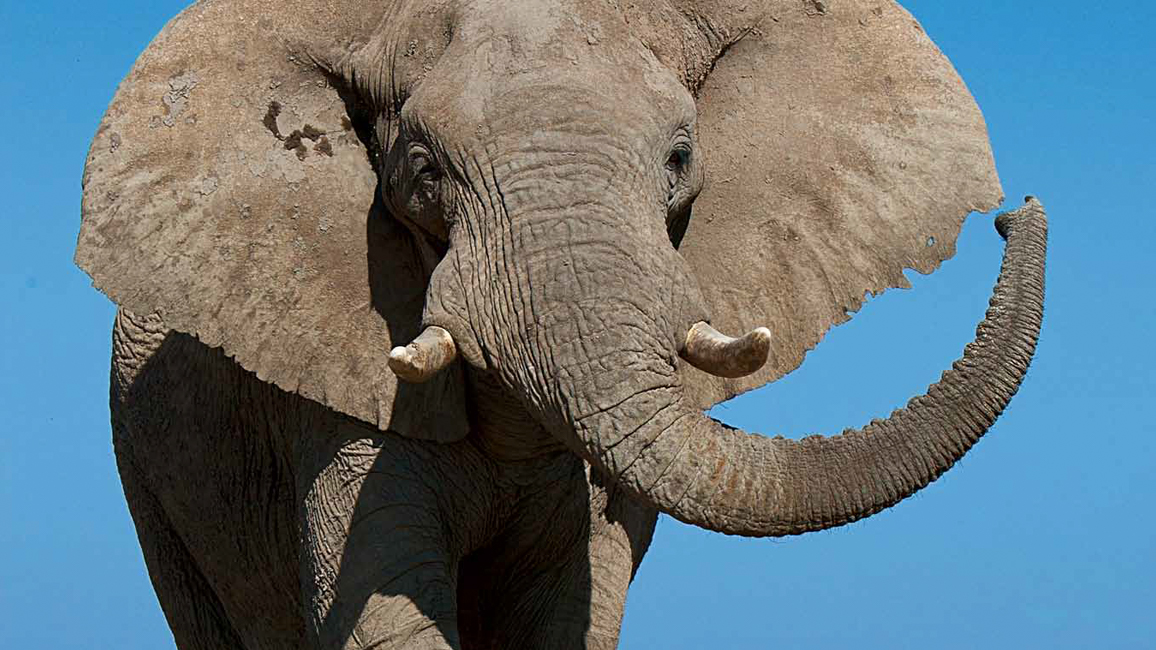
Africa’s Big and Little Five
By Hannah SchardtElephants, lions, leopards, rhinos, and buffalo: They are Africa’s animal superstars. But for each BIG animal, there’s a much smaller African animal that shares part of its name.
ELEPHANT AND ELEPHANT SHREW
African elephants are the largest land animals on Earth, and their trunks are sized to match. But there’s another African mammal with a super-long, super-useful nose: the elephant shrew.
Like an elephant’s trunk, an elephant shrew’s nose is flexible and can twist around to search for food. But for the elephant shrew, that food isn’t an elephant treat such as tree bark or leaves. It’s insects!
A full-grown elephant shrew is only about 6 inches long. Fourteen of them standing head-to-tail would be as long as an elephant’s trunk!
LION AND ANTLION
Lions are master hunters—able to catch and kill large, speedy prey such as antelope. But you don’t have to be big to be a great hunter. See the fierce-looking jaws on the insect in the small photo above left? They belong to an antlion, the larval (LAR-vul), or young, form of a dragonfly-like insect.
Some kinds of antlions even use traps to catch their favorite meals: ants. They dig tunnel-shaped pits in sand, bury themselves at the bottom, and wait. When an ant falls into one of these traps, the antlion uses its sharp jaws to pierce the ant’s body. Then it sucks out the body’s fluids. That may not make it king of the jungle, but it does make it king of the sandpit.
LEOPARD AND LEOPARD TORTOISE
It’s hard to imagine two animals less alike than the leopard and leopard tortoise. Leopards are famously fast! They can run more than 35 miles per hour. And they are top-notch hunters that can drag large prey right up into trees. Leopard tortoises are much slower. And they eat mostly grass and other plants.
What these two species do have in common are spots—and for good reason. In the savannas, or grasslands, where both of them live, their spotted bodies help them blend into the shadows.
RHINOCEROS AND RHINOCEROS BEETLE
Can you guess why the beetle above is named after the rhinoceros? The answer is as plain as the horn on its face. The rhinoceros beetle and the black rhinoceros are both known for their impressive horns. What’s surprising is that these two very different animals use their horns in almost the same ways!
Black rhinos use their horns to dig for roots to eat. Rhinoceros beetles also dig with their horns, but to bury themselves under leaves or dirt to hide from danger. And the two “rhinos” use their horns to fight off rivals and impress mates. In both species, a large horn is a sign of a strong, healthy animal.
BUFFALO AND BUFFALO WEAVER
These two don’t look or act alike. So why do they share part of a name? Because they spend a lot of time together.
In Africa, herds of Cape buffalo (above right) roam across miles and miles of grassland, kicking up insects as they walk. Robin-sized buffalo weavers follow along behind, gobbling up the bugs.
Cape buffalo are huge and pretty tough. A herd of buffalo can fight off—and perhaps even kill—an attacking lion. But for the little buffalo weavers that follow the herds around, a big buffalo is no threat. In fact, it’s a meal ticket!
“Africa’s Big and Little Five” originally appeared in the April 2013 issue of Ranger Rick magazine.
(Click on each image above for a closer view of the story.)



















